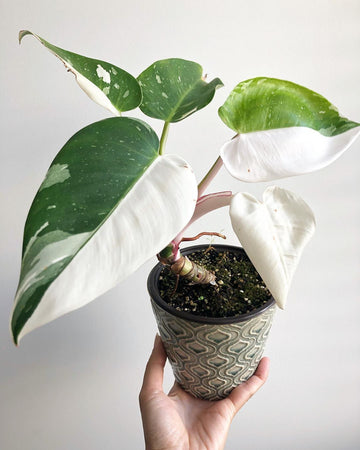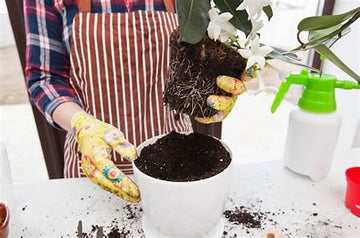Monstera plants, also known as Swiss cheese plants, are native to the tropical forests of Central and South America. They have gained immense popularity in recent years due to their attractive foliage and relatively low maintenance requirements. Their unique leaf design, featuring multiple holes, has made them a favorite among plant collectors and interior designers.
Let's delve deeper into the origin and popularity of Monstera plants. These beautiful plants have a rich history that dates back centuries. Indigenous to the rainforests of Mexico, Panama, and Colombia, Monstera plants have been cherished by local communities for their various uses. Traditionally, the leaves of Monstera plants were used for medicinal purposes, treating ailments such as skin infections and digestive issues.
Over time, the unique beauty of Monstera plants caught the attention of botanists and explorers, who introduced them to the wider world. The distinctively perforated leaves, resembling Swiss cheese, became a symbol of tropical elegance and exoticism. As a result, Monstera plants started gaining popularity in botanical gardens and horticultural societies, captivating the hearts of plant enthusiasts.
Common Signs of Disease in Monstera Plants
Root Rot in Monstera Plants
One of the most common diseases that affect Monstera plants is root rot. This condition occurs when the plant's roots are constantly exposed to excessively moist or soggy soil. Root rot can be caused by overwatering or the use of poorly-draining pots or soil. It is important to avoid watering your Monstera excessively and ensure that the soil drains effectively.

Yellow Leaf Spot
Yellow leaf spot is another prevalent disease in Monstera plants. It is characterized by the appearance of yellow or brown spots on the leaves. This disease is typically caused by fungal infections and can be exacerbated by high humidity levels or inadequate air circulation. Regularly inspecting your Monstera leaves and promptly removing any affected foliage can help prevent the spread of yellow leaf spot.
Bacterial Leaf Spot
Bacterial leaf spot is a contagious disease that can affect Monstera plants. It manifests as small, water-soaked spots on the leaves, which eventually turn brown or black. Bacterial leaf spot is commonly spread through water splashes or contaminated tools. To prevent its occurrence, avoid overhead watering and sanitize your gardening equipment regularly.
Fungal Diseases in Monstera
Monstera plants can also be susceptible to various fungal diseases, including powdery mildew and leaf blight. Powdery mildew appears as a white, powdery coating on the leaves, while leaf blight causes dark, irregular lesions. These fungal diseases thrive in humid environments and can be controlled by adjusting humidity levels and providing adequate air circulation.

Causes of Monstera Diseases
Overwatering and Underwatering
Overwatering or underwatering your Monstera plant can significantly contribute to the development of diseases. Overly wet soil can lead to root rot, while underwatering can weaken the plant's overall health, making it more susceptible to diseases. It is essential to find the right balance and water your Monstera plant only when the top inch of soil feels dry.
Inadequate Light Conditions
Monstera plants require bright, indirect light to thrive. Insufficient light exposure can weaken the plant's immune system and make it more vulnerable to diseases. If your Monstera is not receiving enough light, consider placing it near a window or using artificial grow lights to supplement its light requirements.
Poor Soil Quality
The quality of the soil in which your Monstera is planted plays a significant role in its overall health. Soil that lacks proper drainage or is nutrient-deficient can hinder the plant's growth and increase the risk of diseases. Ensure that you use well-draining soil and consider adding organic matter or fertilizer to provide adequate nutrients for your Monstera.
Pests and Insects
Pests and insects can also infest Monstera plants, causing damage to the leaves and making them more susceptible to diseases. Common pests that affect Monstera plants include spider mites, mealybugs, and scale insects. Regularly inspecting your plant and promptly treating any pest infestations can help prevent the spread of diseases.
Recognizing Symptoms of Monstera Diseases
Changes in Leaf Color
One of the first signs of a disease in Monstera plants is noticeable changes in leaf color. This can manifest as browning, yellowing, or the appearance of dark spots. Pay close attention to any changes in leaf coloration, as these can often indicate an underlying issue.
Wilting or Drooping Leaves
When a Monstera plant is affected by diseases, its leaves may start to wilt or droop. This occurs when the cells within the leaves are damaged, leading to a loss of turgidity. If you notice your Monstera leaves appearing limp or droopy, it is essential to investigate the cause and take appropriate action.
Stunted Growth
Diseases can significantly impact the growth of Monstera plants, causing them to exhibit stunted or slow growth. If your Monstera plant is not growing as expected or new leaves are not emerging, it may be a sign that the plant is dealing with an underlying disease.
Visible Pests or Insects
If you observe pests or insects on your Monstera plant, this could indicate a disease infestation. Common signs of pest presence include webs, sticky residue, or visible insects on the leaves or stems. It is crucial to address any pest issues promptly to prevent them from spreading or causing further damage.
In conclusion, Monstera plants are beautiful additions to any indoor space but are prone to various diseases that can affect their appearance and overall health. Understanding the causes, symptoms, and treatment options for these diseases is essential for every Monstera enthusiast. By providing optimal growing conditions, regularly inspecting your plants, and promptly addressing any issues, you can enjoy healthy and thriving Monstera plants for years to come.





